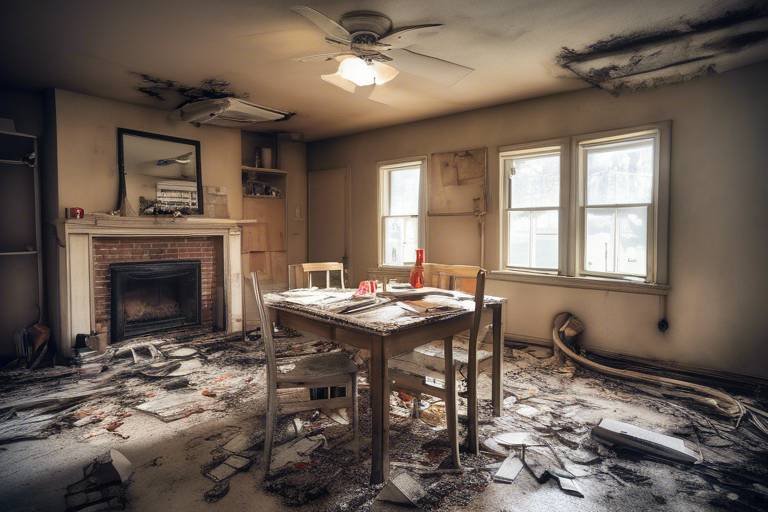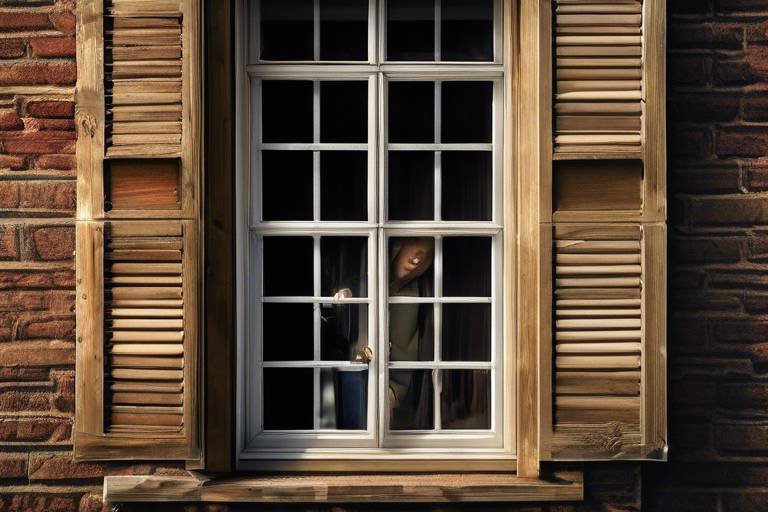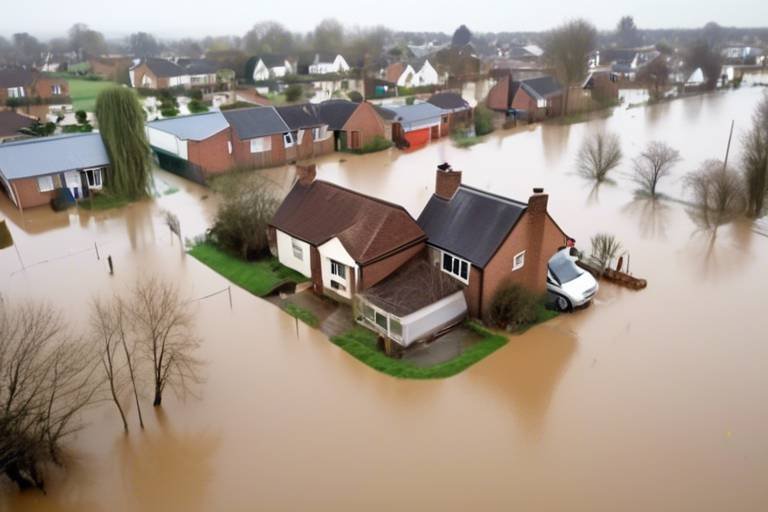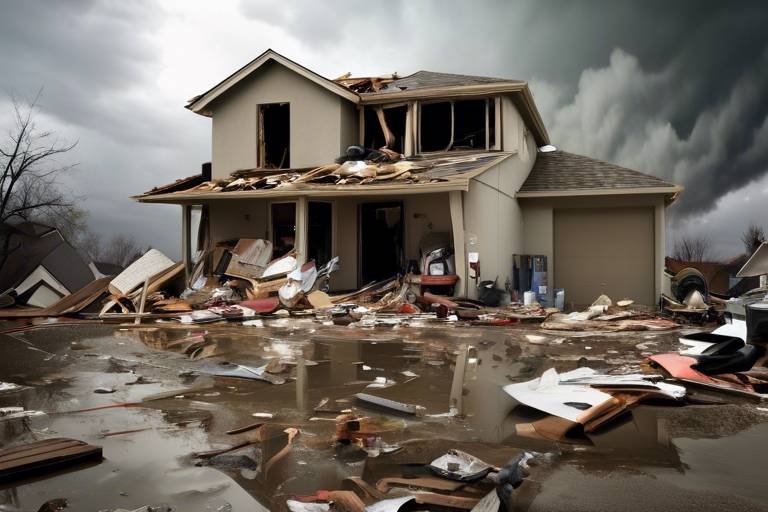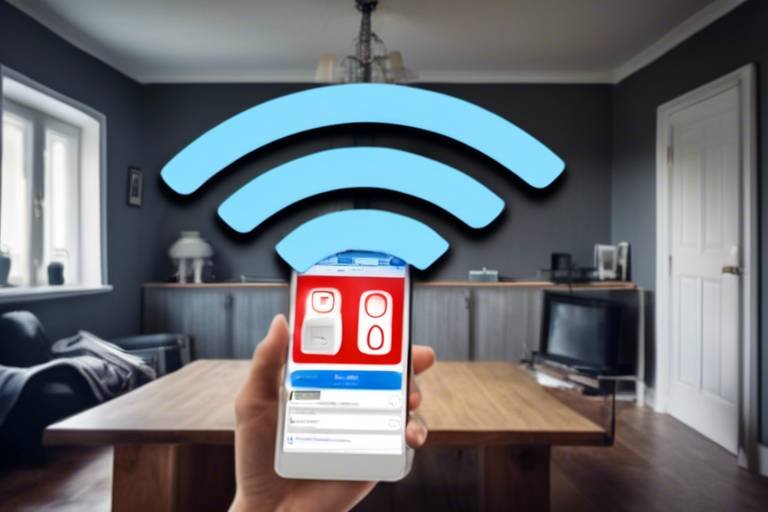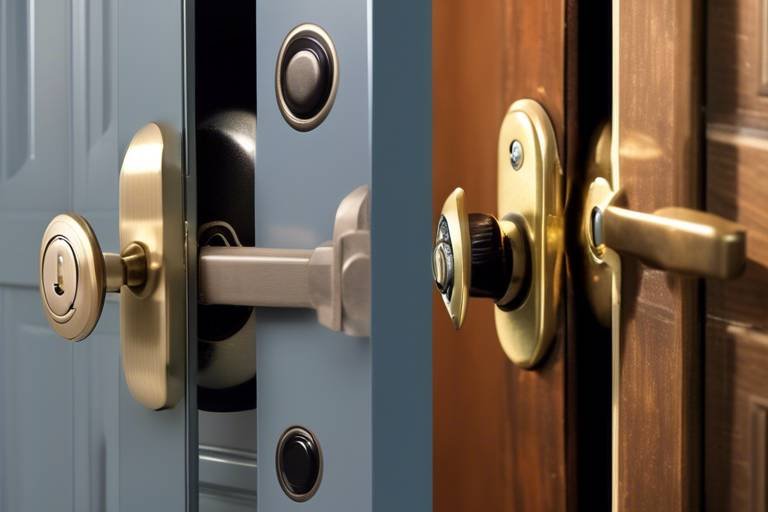The Impact of Climate Change on Home Safety
This article explores the various ways climate change affects home safety, including increased natural disasters, structural vulnerabilities, and the need for adaptive measures to protect our living environments.
Climate change refers to significant alterations in global temperatures and weather patterns over time. While climate change is a natural phenomenon, human activities, especially the burning of fossil fuels, deforestation, and industrial processes, have accelerated these changes. The implications are profound and far-reaching, impacting ecosystems, wildlife, and, importantly, our homes. As temperatures rise, we face not just warmer summers but also more unpredictable weather events, making it crucial for homeowners to understand the risks and take action. The urgency of this situation cannot be overstated; it's not just about the planet's health but also about ensuring our living spaces remain safe and secure.
One of the most alarming consequences of climate change is the increased frequency and intensity of natural disasters. From hurricanes to wildfires, these events pose significant risks to home safety and property. The reality is that as our climate continues to shift, we must brace ourselves for the unexpected. Homeowners are no longer just worrying about the occasional storm; they now face the likelihood of severe weather events becoming the norm. This shift demands that we rethink our approaches to home safety and disaster preparedness.
Hurricanes are becoming more severe due to climate change, resulting in higher storm surges that can devastate coastal communities and compromise home safety. The combination of rising sea levels and warmer ocean temperatures fuels these powerful storms, making it imperative for those in vulnerable areas to take proactive measures. The aftermath of a hurricane can be catastrophic, with homes destroyed and communities displaced. Therefore, understanding how to prepare for hurricane season is essential for every homeowner.
Homeowners can take proactive steps to prepare for hurricane season, including:
- Securing windows with storm shutters or plywood.
- Creating emergency plans that include evacuation routes and communication strategies.
- Having disaster supply kits ready, stocked with essentials like food, water, medications, and important documents.
These preparations can significantly reduce the risk of damage and ensure that families remain safe during severe weather events.
Coastal communities can enhance resilience by implementing better building codes, investing in infrastructure, and restoring natural barriers such as wetlands and mangroves. These measures not only protect homes but also preserve the ecosystem, providing a buffer against storm impacts. Local governments and communities must collaborate to create strategies that prioritize safety and sustainability, ensuring that homes stand strong against the forces of nature.
As rainfall patterns shift due to climate change, many areas face increased flood risks. This necessitates flood-proofing measures and community planning to safeguard homes and infrastructure. Homeowners should consider elevating their properties, installing sump pumps, and creating barriers to redirect water away from their homes. Community efforts, such as improving drainage systems and restoring natural floodplains, are equally essential in mitigating flood risks.
Climate change can exacerbate existing structural vulnerabilities in homes, making them more susceptible to damage from extreme weather events and temperature fluctuations. For instance, older homes may not be built to withstand the increased moisture from heavier rainfall or the heat from rising temperatures. It's crucial for homeowners to assess their properties and make necessary upgrades to ensure safety and longevity.
Proper insulation and energy-efficient designs can help homes withstand temperature changes and reduce energy consumption. By investing in high-quality insulation, homeowners can maintain comfortable indoor temperatures year-round, which not only enhances safety but also lowers energy bills. Additionally, energy-efficient windows and doors can prevent drafts and protect against the elements, contributing to a more resilient home.
The choice of building materials and construction techniques is crucial in ensuring homes can withstand climate-related stresses, including moisture and temperature extremes. For example, using rot-resistant materials and moisture barriers can significantly enhance a home's durability. Homeowners should consult with professionals to explore sustainable building options that prioritize both safety and environmental responsibility.
Homeowners can implement various adaptive measures to enhance safety, including retrofitting homes, using sustainable materials, and adopting smart technologies for disaster preparedness. These steps not only protect homes but also contribute to a more resilient future.
Integrating smart home technology can improve safety by providing real-time alerts for weather changes and enabling remote monitoring of home conditions. For instance, smart sensors can detect leaks, temperature fluctuations, or power outages, allowing homeowners to respond quickly to potential issues. This technology not only enhances safety but also provides peace of mind, especially during extreme weather events.
Retrofitting existing homes with modern safety features can significantly reduce the risk of damage from climate-related events, ensuring a safer living environment. This may include reinforcing roofs, installing impact-resistant windows, and upgrading electrical systems to handle increased loads during power outages. By taking these steps, homeowners can protect their investments and create a safer space for their families.
Q: What can I do to prepare my home for climate change?
A: Start by assessing your home for vulnerabilities, improving insulation, and investing in smart technology to monitor conditions. Also, create an emergency plan and gather necessary supplies.
Q: How can I make my home more resilient to floods?
A: Consider elevating your home, installing sump pumps, and creating barriers to redirect water. Additionally, participate in community efforts to improve drainage systems.
Q: Are there specific building materials that are better for climate resilience?
A: Yes, materials like concrete, steel, and treated wood can offer better resistance to moisture and temperature extremes. Consult with a professional for tailored advice.

Understanding Climate Change
Climate change refers to long-term shifts in temperatures and weather patterns, primarily caused by human activities, especially the burning of fossil fuels such as coal, oil, and gas. These activities release greenhouse gases (GHGs) into the atmosphere, trapping heat and leading to a gradual increase in global temperatures. This phenomenon has far-reaching implications, not just for the environment but also for our everyday lives, including the safety of our homes.
The consequences of climate change are evident in various forms, from rising sea levels to extreme weather events. The Intergovernmental Panel on Climate Change (IPCC) has highlighted several critical factors contributing to climate change, including:
- Deforestation: The removal of trees reduces the planet's capacity to absorb CO2, exacerbating the greenhouse effect.
- Industrial Emissions: Factories and power plants emit large quantities of GHGs, significantly impacting air quality and climate.
- Agricultural Practices: Certain farming methods release methane and nitrous oxide, potent greenhouse gases that contribute to warming.
As these factors continue to influence our planet, the implications for home safety become increasingly pressing. Homes are not just physical structures; they are sanctuaries where we seek comfort and security. However, as climate change intensifies, these sanctuaries face new vulnerabilities. For instance, the rise in global temperatures can lead to extreme heat events, which can affect the structural integrity of homes, especially those not designed to withstand such conditions.
Moreover, the shifting climate patterns can lead to unpredictable weather, making it essential for homeowners to stay informed and proactive. Understanding climate change is the first step towards taking action. By recognizing how our environment is changing, we can better prepare for its impacts, ensuring that our homes remain safe and resilient.
In conclusion, climate change is an urgent issue that requires our attention and action. The effects are not just distant threats; they are here and now, impacting our safety and the very foundations of our homes. It is vital that we educate ourselves and take steps toward a sustainable future, not just for ourselves but for future generations.
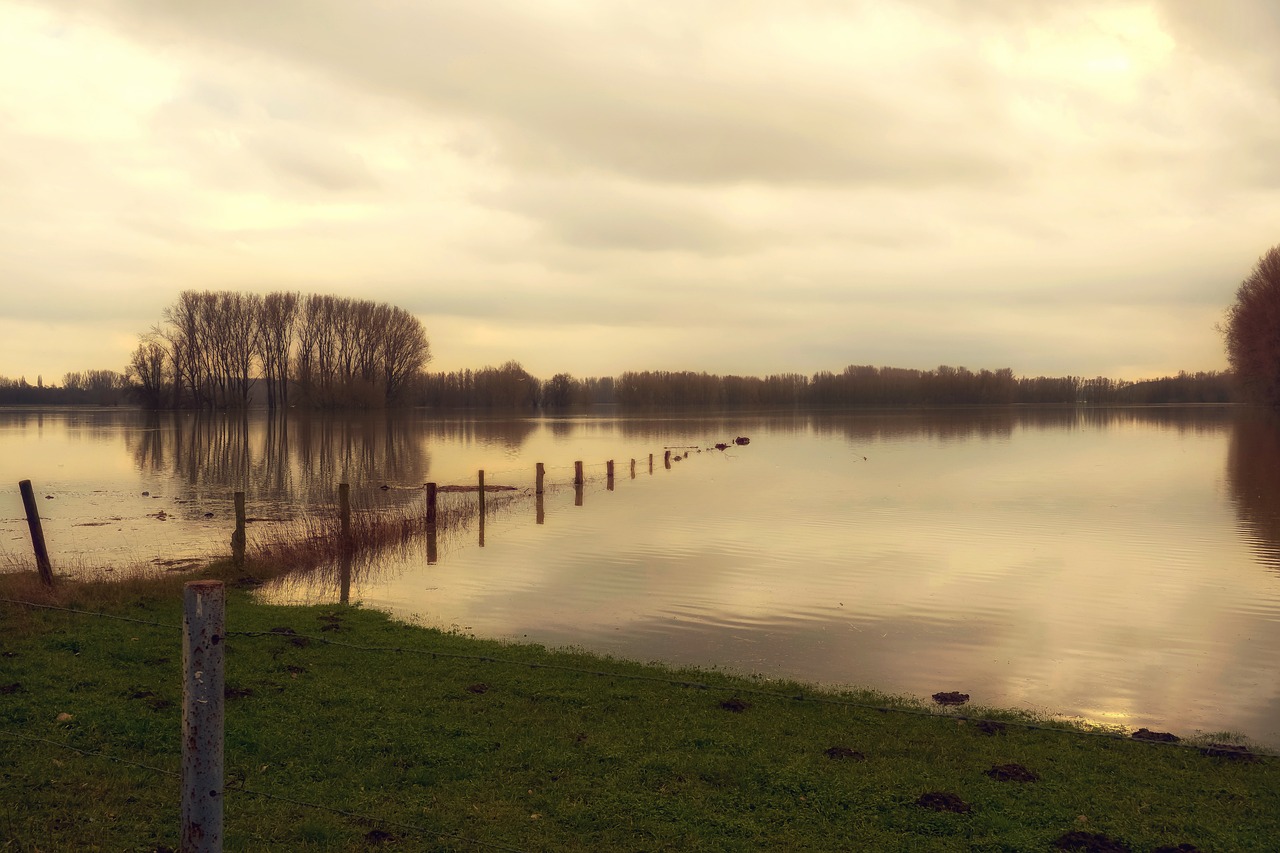
Increased Frequency of Natural Disasters
Climate change isn't just a distant threat; it's knocking on our doors with increasing frequency and intensity. The reality is that our planet is experiencing a surge in natural disasters, and these events are becoming more severe every year. From hurricanes that unleash their fury with little warning to floods that transform serene landscapes into raging torrents, the risks to home safety are escalating. Have you ever thought about how these disasters could impact your living environment? It's a pressing concern that demands our attention.
Take hurricanes, for example. As ocean temperatures rise, they fuel these storms, leading to more powerful hurricanes that can wreak havoc on coastal communities. The storm surges associated with these hurricanes are not just a minor inconvenience; they can inundate homes, destroy property, and even threaten lives. It's essential for homeowners in vulnerable areas to recognize the potential for devastation and to prepare accordingly.
We often hear about the destruction caused by hurricanes, but what about the storm surges? These surges are the abnormal rises in sea level that occur during a storm, and they can push seawater far inland, causing catastrophic flooding. The National Oceanic and Atmospheric Administration (NOAA) has reported that the average height of storm surges is increasing, which means that homes once considered safe may now be at risk. It's crucial to understand the relationship between climate change and these natural disasters, as it highlights the urgent need for preparedness and resilience.
So, what can homeowners do to safeguard their properties against these formidable forces of nature? Here are some proactive steps:
- Secure Windows: Installing storm shutters or impact-resistant windows can help protect your home from flying debris.
- Create Emergency Plans: Having a family emergency plan ensures everyone knows what to do when a hurricane strikes.
- Disaster Supply Kits: Stocking up on essential supplies, such as water, non-perishable food, and first-aid kits, can make a significant difference in an emergency.
Coastal communities must also play their part in enhancing resilience. This can be achieved through:
- Better Building Codes: Implementing stringent building codes ensures that new homes can withstand extreme weather conditions.
- Investing in Infrastructure: Upgrading drainage systems and roads can help mitigate flooding risks.
- Restoring Natural Barriers: Preserving wetlands and mangroves can act as natural defenses against storm surges.
In summary, the increased frequency of natural disasters due to climate change is a reality we cannot ignore. Homeowners must be proactive in preparing for these events, and communities need to invest in resilience measures. The safety of our homes and families depends on our awareness and action. Are you ready to take the necessary steps to protect your living environment?
1. What are the main causes of climate change?
Climate change is primarily driven by human activities, such as burning fossil fuels, deforestation, and industrial processes that release greenhouse gases into the atmosphere.
2. How can I prepare my home for natural disasters?
Preparation includes securing windows, creating an emergency plan, having disaster supply kits ready, and understanding the risks specific to your area.
3. What are storm surges, and why are they dangerous?
Storm surges are abnormal rises in sea level caused by storms, leading to flooding in coastal areas. They can be extremely dangerous as they can inundate homes and infrastructure.
4. How can communities enhance resilience against climate-related disasters?
Communities can enhance resilience by implementing better building codes, investing in infrastructure improvements, and restoring natural barriers like wetlands.
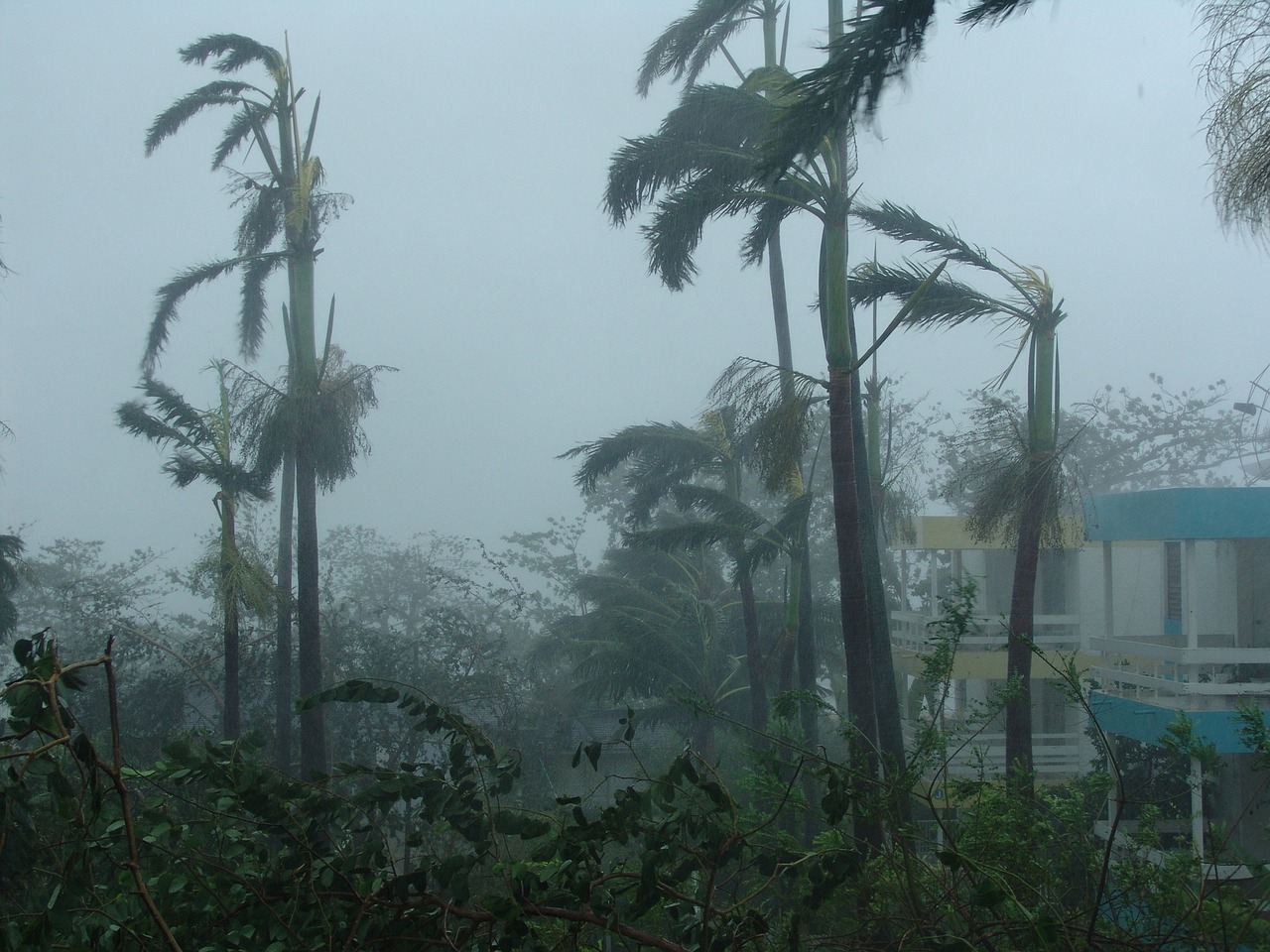
Hurricanes and Storm Surges
Hurricanes are no longer just seasonal events; they have transformed into powerful storms that wreak havoc on communities, especially along coastlines. With climate change intensifying weather patterns, the frequency and severity of hurricanes have surged, leading to devastating storm surges that can inundate homes and infrastructure. Have you ever imagined what it feels like to watch the ocean rise and breach the land? It’s a terrifying experience that many coastal residents now face, as homes that once stood safely away from the waterline are now at risk of being swallowed whole.
The science behind this phenomenon is alarming. Warmer ocean temperatures fuel hurricanes, allowing them to gather strength and moisture. When these storms make landfall, they are often accompanied by storm surges—massive walls of water that can push inland, causing catastrophic flooding. For instance, during Hurricane Katrina in 2005, storm surges reached as high as 28 feet in some areas, devastating entire neighborhoods. The reality is that as sea levels rise due to melting ice caps and thermal expansion, the potential for even more destructive storm surges increases.
To illustrate the impact of hurricanes and storm surges, consider the following table that highlights key statistics from recent hurricanes:
| Hurricane | Year | Max Wind Speed (mph) | Storm Surge Height (feet) | Damage (in billions) |
|---|---|---|---|---|
| Katrina | 2005 | 175 | 28 | $125 |
| Sandy | 2012 | 115 | 14 | $70 |
| Harvey | 2017 | 130 | 6 | $125 |
| Irma | 2017 | 185 | 15 | $50 |
As you can see, the damage caused by hurricanes is not just about wind; it's the storm surge that often leads to the most destruction. Homeowners in hurricane-prone areas need to take this threat seriously. Preparing for a hurricane involves more than just stocking up on supplies; it requires a thorough understanding of how to protect your property from potential flooding. Securing windows, reinforcing doors, and elevating critical systems like electrical panels can make a significant difference when a storm approaches.
Moreover, community planning plays a crucial role in mitigating the effects of hurricanes. Local governments can invest in better drainage systems, restore wetlands that act as natural barriers, and enforce strict building codes to ensure that new constructions can withstand the forces of nature. In this way, we can collectively build resilience against these increasingly frequent and powerful storms.

Preparing for Hurricane Season
As hurricane season approaches, it's essential for homeowners to take proactive steps to ensure their safety and protect their property. The unpredictability of hurricanes can be daunting, but with careful planning and preparation, you can significantly reduce risks. First and foremost, creating an emergency plan is crucial. This plan should include communication strategies for your family, designated meeting points, and an understanding of evacuation routes. It's like having a roadmap in a chaotic situation—knowing where to go can save time and reduce panic.
Next, securing your home is vital. This involves reinforcing windows and doors to withstand high winds. Consider installing storm shutters or using plywood to cover vulnerable areas. Think of your home as a fortress; the stronger it is, the better it can withstand the battering from nature. Additionally, trimming trees and clearing gutters can prevent debris from causing damage during a storm. A well-maintained yard is your first line of defense against flying projectiles.
Another critical aspect of hurricane preparedness is assembling a disaster supply kit. This kit should include essentials such as non-perishable food, water, medications, flashlights, batteries, and first-aid supplies. You might also want to include important documents in a waterproof container. Imagine being stuck without power; having these supplies on hand can make all the difference. The Federal Emergency Management Agency (FEMA) recommends having enough supplies to last at least 72 hours. This is your safety net during the storm's aftermath.
Furthermore, staying informed about weather updates is imperative. Utilize apps and local news channels to monitor hurricane developments. This allows you to make informed decisions about when to evacuate or when to stay put. In today’s age, technology can be your best friend; set up alerts on your phone to receive real-time updates. Remember, knowledge is power, especially when facing the wrath of a hurricane.
Lastly, consider the benefits of community preparedness. Engaging with your neighbors can create a support system that enhances overall safety. Organize community meetings to discuss preparation strategies and share resources. After all, we are stronger together—collaboration can lead to more effective responses during emergencies. By taking these steps, you not only protect your home but also contribute to a safer community.
In summary, preparing for hurricane season is not just about securing your home; it's about creating a comprehensive plan that encompasses safety, communication, and community engagement. With the right measures in place, you can face the hurricane season with confidence, knowing that you are ready for whatever comes your way.

Building Resilience in Coastal Areas
As the impacts of climate change become increasingly evident, especially in coastal regions, the need for resilience has never been more critical. Coastal communities are on the front lines, facing the brunt of severe weather events, rising sea levels, and erosion. To combat these threats, it is essential to implement strategies that not only protect homes but also enhance the overall safety and sustainability of the area. Building resilience involves a multifaceted approach that integrates better building codes, infrastructure investment, and the restoration of natural barriers.
First and foremost, updating building codes is crucial. Many coastal areas still adhere to outdated regulations that do not account for the increasing severity of storms and flooding. By adopting stricter building codes that require elevated structures, stronger materials, and improved drainage systems, communities can significantly reduce the risk of damage. For example, homes built on stilts or raised foundations are less likely to be impacted by storm surges, providing a safer living environment for residents.
Furthermore, investing in infrastructure is vital. Upgrading roads, bridges, and public utilities to withstand extreme weather can make a significant difference in how communities respond to disasters. This investment not only protects property but also ensures that emergency services can operate effectively during crises. In addition, green infrastructure solutions, such as permeable pavements and rain gardens, can help manage stormwater runoff, reducing the risk of flooding in urban areas.
Another key strategy is the restoration of natural barriers. Coastal ecosystems, such as wetlands and mangroves, play a crucial role in absorbing storm surges and protecting shorelines from erosion. By restoring these natural habitats, communities can enhance their resilience while also promoting biodiversity. It’s a win-win situation: not only do we protect our homes, but we also create healthier ecosystems. This approach can be summarized in the following table:
| Strategy | Benefits |
|---|---|
| Updating Building Codes | Reduced damage from storms; safer structures |
| Investing in Infrastructure | Improved emergency response; better flood management |
| Restoring Natural Barriers | Enhanced protection from storm surges; biodiversity promotion |
In addition to these strategies, community engagement is essential. Residents should be actively involved in the planning process, ensuring that their unique needs and concerns are addressed. Workshops and forums can provide valuable platforms for sharing information and fostering a sense of community. When people feel invested in their surroundings, they are more likely to take proactive measures to protect their homes and neighborhoods.
In conclusion, building resilience in coastal areas is not just an option; it is a necessity in the face of climate change. By updating building codes, investing in infrastructure, restoring natural barriers, and engaging the community, we can create safer, more sustainable living environments. The journey towards resilience may be challenging, but with collective effort and innovative thinking, we can protect our coastal homes and ensure a brighter future for generations to come.
- What are the main causes of climate change? Climate change is primarily driven by human activities, including the burning of fossil fuels, deforestation, and industrial processes that release greenhouse gases into the atmosphere.
- How can homeowners prepare for natural disasters? Homeowners can prepare by creating emergency plans, securing their homes, and having disaster supply kits ready.
- What role do natural barriers play in coastal resilience? Natural barriers like wetlands and mangroves absorb storm surges and protect shorelines from erosion, making them essential for coastal resilience.

Flood Risks and Mitigation
As climate change continues to reshape our planet, one of the most alarming consequences is the increased risk of flooding. With rainfall patterns becoming more erratic and intense, many regions are experiencing severe flooding events that threaten not only homes but also entire communities. Imagine waking up to find your neighborhood submerged, your belongings floating away, and the very foundation of your home compromised. This isn’t just a nightmare; it’s a reality for many as the climate crisis escalates.
Flood risks are not just a concern for those living near rivers or coasts; they can affect anyone. Urban areas with poor drainage systems are particularly vulnerable, as heavy rains can overwhelm infrastructure designed for lighter showers. To illustrate, consider a city where the average annual rainfall has increased by 20% over the last decade. The existing drainage system, built for a different climate reality, struggles to cope, leading to regular flooding. This scenario highlights the urgent need for effective mitigation strategies.
Mitigation involves both proactive and reactive measures to reduce the impact of flooding. Homeowners and communities can take several steps to protect their properties and enhance safety:
- Flood-Proofing Homes: This can include elevating homes above flood levels, using flood-resistant materials, and installing sump pumps to manage water intrusion.
- Community Planning: Local governments can invest in better drainage systems, green spaces that absorb rainwater, and flood barriers to redirect water away from populated areas.
- Awareness and Education: Communities should educate residents about flood risks and emergency procedures, ensuring everyone knows how to respond when disaster strikes.
Moreover, understanding your local flood zone is crucial. Many municipalities offer flood risk assessments that can help homeowners identify their vulnerability and take appropriate action. For instance, if your home is located in a high-risk flood zone, obtaining flood insurance might be a wise investment. This coverage can provide financial support in the aftermath of a flood, allowing you to rebuild and recover more swiftly.
Another effective mitigation strategy is the implementation of green infrastructure. This approach utilizes natural systems to manage stormwater and reduce flooding. Examples include:
| Type of Green Infrastructure | Description |
|---|---|
| Rain Gardens | Shallow, planted depressions that absorb rainwater from roofs, sidewalks, and streets. |
| Permeable Pavement | Driveways and walkways designed to allow water to seep through, reducing runoff. |
| Green Roofs | Vegetated roofs that absorb rainfall and provide insulation, reducing runoff and energy costs. |
Incorporating these systems not only mitigates flood risks but also enhances the overall aesthetics and environmental quality of neighborhoods. It’s a win-win situation—protecting homes while promoting biodiversity and improving air quality.
In conclusion, while we cannot stop climate change, we can certainly adapt and mitigate its impacts, especially when it comes to flooding. By understanding the risks, investing in better infrastructure, and employing innovative solutions, we can safeguard our homes and communities from the devastating effects of floods. The key lies in taking action now before the waters rise.
- What are the signs that my home is at risk of flooding? Look for signs like frequent wet spots in your yard, water stains on your walls, or a history of flooding in your area.
- How can I prepare my home for potential flooding? Elevate electrical systems, install sump pumps, and keep flood insurance policies up to date.
- What should I do during a flood warning? Move to higher ground, avoid walking or driving through floodwaters, and stay tuned to local news for updates.

Structural Vulnerabilities of Homes
As we delve into the structural vulnerabilities of homes, it’s crucial to understand how climate change intensifies these weaknesses. Many homes, especially older ones, were built without the foresight of today's environmental challenges. This can make them particularly susceptible to the ravages of extreme weather events and significant temperature fluctuations. Think of it like a house of cards; one strong gust of wind or a sudden downpour can send everything tumbling down. The reality is that as our climate becomes more unpredictable, our homes need to be more resilient.
One of the primary issues is the aging infrastructure. Homes built decades ago often lack the modern materials and techniques designed to withstand today's climate challenges. For instance, many houses still rely on traditional roofing materials that may not hold up against heavy rainfall or hail. This can lead to leaks, structural damage, and even mold growth, which poses health risks to the occupants. It’s like wearing a raincoat that has holes in it; no matter how much you try to stay dry, you’re bound to get wet!
Another significant factor is insulation. Proper insulation plays a vital role in maintaining a stable indoor environment. Without it, homes can become overly hot in the summer and frigid in the winter, leading to increased energy consumption and higher utility bills. Moreover, inadequate insulation can cause ice dams in colder climates, resulting in water damage to roofs and ceilings. This is why investing in quality insulation is not just about comfort; it’s about protecting your home from the elements.
Additionally, the materials used in construction can greatly affect a home’s resilience. For example, homes built with wood in flood-prone areas are at a higher risk of damage compared to those constructed with concrete or steel. Moisture can warp wood, leading to structural integrity issues over time. To illustrate, let’s consider a comparison of common building materials:
| Material | Strength Against Moisture | Longevity | Cost |
|---|---|---|---|
| Wood | Low | 20-50 years | Low |
| Concrete | High | 50-100 years | Medium |
| Steel | Very High | 75-100 years | High |
As you can see, the choice of materials can significantly impact a home's ability to withstand climate-related stresses. Homeowners should consider investing in more resilient materials to enhance safety and longevity. It’s a bit like choosing between a sturdy umbrella and a flimsy one; one will keep you dry while the other leaves you soaked.
In conclusion, addressing the structural vulnerabilities of homes is not just about making them livable; it’s about ensuring their safety against the backdrop of a changing climate. By understanding these vulnerabilities and taking proactive measures, homeowners can safeguard their living environments against the increasing threats posed by nature.
- What are the main structural vulnerabilities of homes?
Homes can be vulnerable due to aging infrastructure, inadequate insulation, and the choice of building materials. - How can homeowners improve their home's resilience?
Investing in quality insulation, using resilient materials, and retrofitting existing structures can enhance safety. - Why is insulation important?
Proper insulation helps maintain a stable indoor environment and reduces energy consumption, protecting homes from temperature extremes.
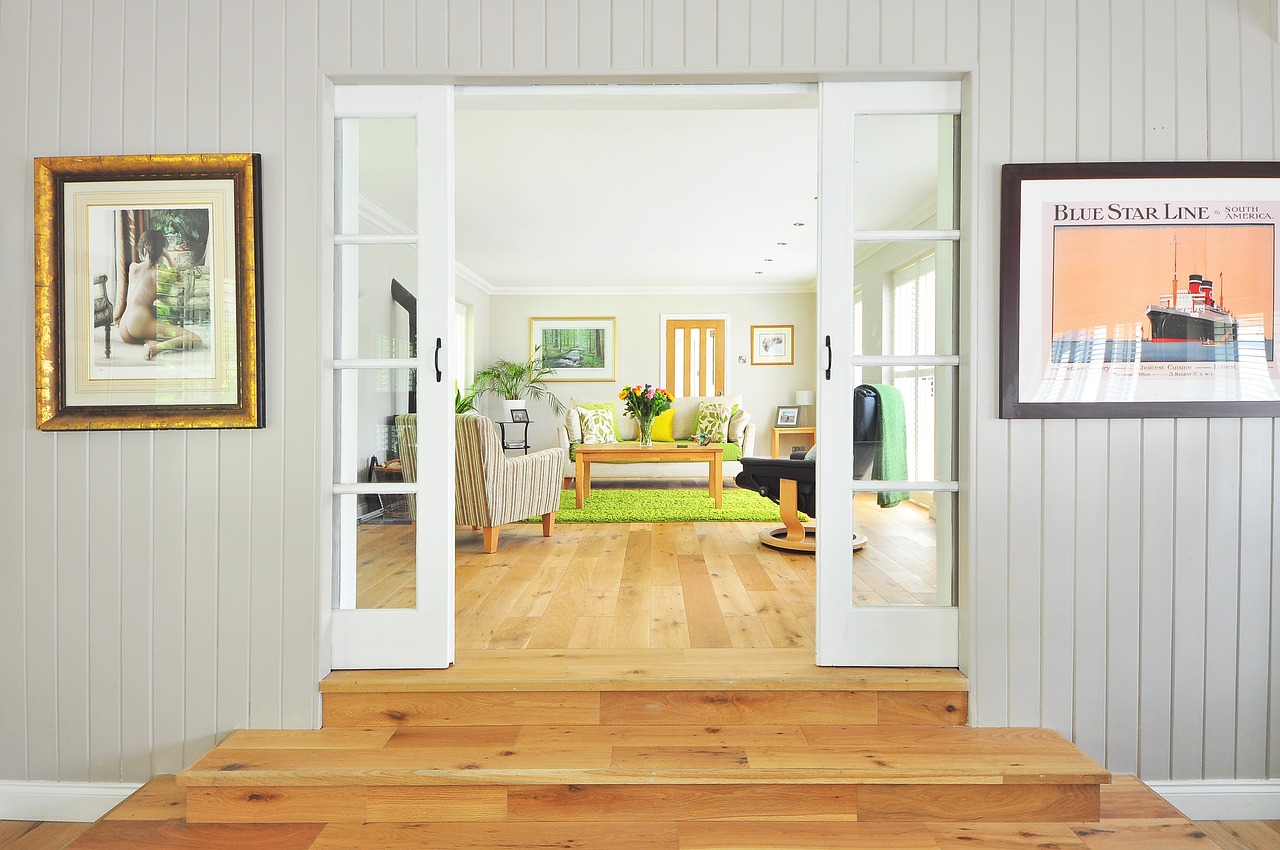
Insulation and Energy Efficiency
When it comes to safeguarding our homes from the unpredictable effects of climate change, play a pivotal role. Imagine your home as a fortress; the better you insulate it, the more fortified it becomes against the harsh elements outside. With rising temperatures and extreme weather events becoming the new norm, having a well-insulated home is not just a luxury—it's a necessity. Proper insulation helps maintain a consistent indoor temperature, ensuring that your home remains comfortable year-round while also reducing energy consumption.
Think about it: when your home is poorly insulated, you're not just battling the sweltering heat or the biting cold; you're also watching your energy bills skyrocket. In fact, according to the U.S. Department of Energy, up to 30% of a home's heating and cooling energy can be lost through inadequate insulation. This not only affects your wallet but also contributes to increased greenhouse gas emissions, further exacerbating climate change. By investing in high-quality insulation, you can create a more energy-efficient home that reduces your carbon footprint and helps combat climate change.
There are various types of insulation materials available, each with its own benefits. For instance, fiberglass insulation is one of the most common options due to its affordability and effectiveness. However, spray foam insulation is gaining popularity for its superior air-sealing properties, making it an excellent choice for energy efficiency. Additionally, using reflective or radiant barrier insulation can help keep your home cooler in the summer by reflecting heat away from living spaces.
Moreover, energy-efficient designs go hand in hand with insulation. Incorporating features like triple-glazed windows, which provide better thermal performance than standard double-glazed windows, can significantly enhance your home's ability to retain heat. When combined with proper insulation, these windows can create a cozy environment that minimizes the need for heating and cooling systems to work overtime.
Ultimately, the benefits of investing in insulation and energy efficiency extend beyond just comfort and cost savings. By making your home more resilient to climate change, you're also contributing to a sustainable future. In a world where climate-related disasters are increasingly common, adapting our homes to be energy-efficient and well-insulated can mean the difference between safety and vulnerability. So, as you consider ways to protect your home, remember that insulation is not just about comfort—it's about survival.
- What are the benefits of proper insulation?
Proper insulation helps maintain a consistent indoor temperature, reduces energy costs, and minimizes environmental impact. - How can I tell if my home is well-insulated?
Signs of poor insulation include drafts, high energy bills, and uneven temperatures throughout your home. - What types of insulation are best for energy efficiency?
Fiberglass, spray foam, and reflective insulation are popular choices for enhancing energy efficiency. - Can I install insulation myself?
While some insulation types can be DIY projects, it's often best to consult a professional for optimal results.

Building Materials and Techniques
When it comes to ensuring the safety and longevity of our homes in the face of climate change, the choice of building materials and construction techniques cannot be overstated. As we witness more extreme weather events, it’s crucial to adopt materials that can withstand these challenges. For instance, traditional wood framing may not be the best option in areas prone to flooding or wildfires. Instead, composite materials or concrete can offer enhanced durability and resistance to the elements.
Furthermore, the techniques used in building also play a significant role. Homes that are designed with elevated foundations in flood-prone areas can prevent water damage, while structures built with fire-resistant materials can better withstand the threat of wildfires. It’s like dressing your house in a protective suit; the right materials can shield it from nature's unpredictable moods.
In addition to considering the materials, homeowners should also focus on sustainable building practices. Green building techniques, such as using recycled materials or incorporating energy-efficient designs, not only enhance the home's resilience but also contribute to a healthier planet. For example, homes built with straw bales or rammed earth can provide excellent insulation and are often more sustainable than conventional options.
Moreover, it’s essential to understand how different climates affect material performance. In regions with high humidity, materials that are resistant to mold and moisture, like fiber-cement siding, should be prioritized. Conversely, in arid areas, materials that can handle extreme heat and minimize thermal expansion, such as ceramic tiles, are advisable. The right choices can make a world of difference, transforming your home into a fortress against the elements.
To sum it up, investing in the right building materials and techniques is not just about aesthetics; it's about creating a safe, resilient environment for you and your family. As we adapt to the realities of climate change, let’s remember that our homes should be our sanctuary, equipped to handle whatever Mother Nature throws our way.
- What materials are best for flood-prone areas?
Materials like concrete, steel, and certain composite materials are recommended due to their durability and resistance to water damage.
- How can I make my home more fire-resistant?
Using fire-resistant materials such as stucco, brick, and certain types of roofing can significantly enhance your home's fire resistance.
- What is the importance of insulation in climate resilience?
Proper insulation helps regulate indoor temperatures, reducing energy consumption and making homes more comfortable during extreme weather.

Adaptive Measures for Homeowners
As the effects of climate change become increasingly evident, homeowners must take proactive steps to protect their living environments. The good news is that there are various adaptive measures that can significantly enhance home safety and resilience against climate-related challenges. One of the first steps homeowners can consider is retrofitting their existing homes. This process involves upgrading structures with modern safety features that can withstand extreme weather events. For instance, reinforcing roofs and installing impact-resistant windows can help mitigate damage during storms.
Another essential aspect of adapting to climate change is the use of sustainable materials. Choosing materials that are not only durable but also environmentally friendly can make a significant difference in a home's resilience. For example, using reclaimed wood or recycled metal can reduce the overall carbon footprint while providing robust structural integrity. Additionally, implementing energy-efficient designs can help homes maintain a stable internal temperature, reducing the strain on heating and cooling systems. This not only promotes safety but also saves on energy costs, which is a win-win!
Moreover, integrating smart home technology can take home safety to the next level. These technologies can provide homeowners with real-time alerts for weather changes, allowing them to react promptly to potential threats. Imagine receiving a notification on your smartphone about an impending storm, enabling you to secure your property before the worst hits. Smart sensors can also monitor humidity and temperature levels, alerting homeowners to any unusual changes that may indicate potential structural issues.
To further illustrate the importance of these adaptive measures, let's take a look at a few key points:
- Retrofitting for Resilience: Enhancing existing structures to withstand climate-related events.
- Sustainable Materials: Using eco-friendly and durable materials for construction and renovation.
- Smart Home Technology: Implementing systems that provide real-time monitoring and alerts.
In summary, homeowners have a vital role to play in adapting to the challenges posed by climate change. By proactively implementing these adaptive measures, not only can they protect their homes, but they can also contribute to a broader effort to create resilient communities. The journey towards a safer and more sustainable living environment starts with informed decisions today.
Q1: What is retrofitting, and why is it important?
A1: Retrofitting involves upgrading existing structures with modern safety features to enhance resilience against extreme weather events. It's crucial because it helps protect homes from damage and can improve energy efficiency.
Q2: How can smart home technology improve home safety?
A2: Smart home technology provides real-time alerts for weather changes and allows homeowners to monitor their home conditions remotely. This capability enables timely actions to secure the home against potential threats.
Q3: What types of sustainable materials should I consider for my home?
A3: Consider using materials like reclaimed wood, recycled metal, and low-VOC (volatile organic compounds) products that are both durable and environmentally friendly.

Smart Home Technology
In today's fast-paced world, is not just a luxury; it's becoming a necessity, especially when we consider the implications of climate change on home safety. Imagine having a home that can alert you to impending weather threats before they strike. This is the power of smart technology, and it can significantly enhance your home’s resilience against the unpredictable nature of our changing climate.
Smart home devices, such as weather sensors and smart thermostats, can help homeowners monitor external conditions and adjust their indoor environments accordingly. For instance, a smart thermostat can learn your preferences and optimize your energy use, which is crucial during extreme temperature fluctuations caused by climate change. By maintaining a consistent indoor climate, you not only enhance comfort but also protect your home's structural integrity.
Moreover, these devices can be interconnected. When a weather sensor detects high winds or heavy rain, it can communicate with your smart blinds to close them, providing an extra layer of protection for your windows. This kind of integration can prevent damage from storm surges or heavy rainfall, which are becoming more frequent due to climate change.
Additionally, many smart home systems offer real-time alerts and notifications. This means you can receive instant updates on weather changes or emergency situations, allowing you to take swift action. For example, if a flood warning is issued in your area, your smart home system could send you an alert, enabling you to prepare or evacuate if necessary. This capability not only enhances safety but also provides peace of mind.
To illustrate the effectiveness of smart home technology, consider the following table that outlines some popular smart devices and their benefits:
| Device | Functionality | Benefits |
|---|---|---|
| Smart Thermostat | Adjusts heating and cooling automatically | Energy savings, comfort during temperature extremes |
| Weather Sensors | Monitors external weather conditions | Real-time alerts for severe weather |
| Smart Security Systems | Monitors home security and provides alerts | Enhanced safety and protection against theft |
| Smart Flood Sensors | Detects water leaks and flooding | Prevents water damage and costly repairs |
In conclusion, the integration of is a proactive approach to safeguarding your home against the challenges posed by climate change. By investing in these technologies, you're not only enhancing your home’s safety but also contributing to a more sustainable future. As we navigate through these changing times, it’s essential to embrace innovations that can help us adapt and thrive, ensuring that our homes remain safe havens amidst the chaos of the natural world.
- What is smart home technology? Smart home technology refers to devices and systems that connect to the internet, allowing homeowners to control and monitor their home environment remotely.
- How can smart technology help in emergencies? Smart technology can provide real-time alerts for weather changes, enabling homeowners to take necessary precautions during emergencies.
- Are smart home devices expensive? While initial costs can vary, many smart devices offer long-term savings through energy efficiency and reduced repair costs.
- Can I integrate smart devices with existing home systems? Yes, many smart home devices are designed to be compatible with existing systems, allowing for seamless integration.

Retrofitting for Resilience
As climate change continues to shape our environment, the importance of retrofitting homes for resilience cannot be overstated. Retrofitting involves updating and modifying existing structures to improve their ability to withstand extreme weather events and other climate-related challenges. It's like giving your home a much-needed makeover, but instead of just aesthetics, we're focusing on safety and durability.
One of the most significant benefits of retrofitting is that it enhances a home's structural integrity. For instance, reinforcing the foundation and walls can help prevent damage during severe storms or earthquakes. Think of it as putting on a sturdy pair of shoes before embarking on a hiking adventure; you want to ensure that you’re equipped to handle whatever nature throws your way.
Additionally, retrofitting can include upgrading insulation and energy-efficient features. This not only helps protect your home from temperature fluctuations but also reduces energy bills. Imagine being able to enjoy a comfortable indoor climate while saving money—sounds like a win-win, right? Insulation acts like a cozy blanket, keeping your home warm in the winter and cool in the summer, which is crucial as we face more extreme weather patterns.
Moreover, homeowners can consider installing impact-resistant windows and doors. These features are designed to withstand high winds and flying debris during storms. It's akin to wearing a helmet while riding a bike; it adds a layer of protection that can make a significant difference in the event of an accident. By investing in such upgrades, you not only enhance your home’s safety but also potentially increase its market value.
Another critical aspect of retrofitting is the adoption of flood-resistant measures. This can include elevating the home or using flood-proof materials. In areas prone to flooding, these adaptations can mean the difference between a home that remains standing and one that succumbs to water damage. Just like building a dam to hold back rising waters, retrofitting can create barriers that protect your sanctuary.
It’s essential to consult with professionals who specialize in retrofitting to identify the most effective measures for your specific location and home type. They can perform assessments and recommend tailored solutions that address both current vulnerabilities and anticipated future risks. Retrofitting is not just about reacting to climate change; it’s about proactively preparing for it, ensuring that your home remains a safe haven for years to come.
In summary, retrofitting for resilience is a vital strategy for homeowners looking to safeguard their properties against the impacts of climate change. By making informed decisions and investing in the right upgrades, you can create a stronger, safer living environment that can weather any storm.
- What is retrofitting? Retrofitting is the process of updating existing structures to improve their resilience against climate-related challenges.
- Why is retrofitting important? It enhances the structural integrity of homes, making them safer during extreme weather events.
- What are some common retrofitting measures? Common measures include reinforcing foundations, upgrading insulation, and installing impact-resistant windows and doors.
- How can I find a professional for retrofitting? Look for contractors who specialize in retrofitting and have experience with climate resilience projects.
Frequently Asked Questions
- What is climate change and how does it affect home safety?
Climate change refers to long-term shifts in temperatures and weather patterns, primarily caused by human activities like burning fossil fuels. This phenomenon leads to more frequent and severe natural disasters, such as hurricanes and floods, which can significantly jeopardize home safety and property.
- How can I prepare my home for hurricane season?
To prepare for hurricane season, homeowners should take proactive measures such as securing windows with storm shutters, creating an emergency plan that includes evacuation routes, and assembling a disaster supply kit with essentials like food, water, and first-aid supplies. Being prepared can make a huge difference when disaster strikes!
- What are some common structural vulnerabilities in homes due to climate change?
Homes can have vulnerabilities such as poor insulation, outdated building materials, and inadequate drainage systems. These weaknesses can be exacerbated by extreme weather events and temperature fluctuations, making it crucial for homeowners to assess and strengthen their properties.
- How can I make my home more resilient to climate-related events?
Homeowners can enhance resilience by retrofitting their homes with modern safety features, using sustainable building materials, and incorporating smart home technology. These adaptive measures not only improve safety but also promote energy efficiency and sustainability.
- What role does smart home technology play in home safety?
Smart home technology can significantly boost safety by providing real-time alerts for weather changes, allowing homeowners to monitor conditions remotely, and automating emergency responses. This technology helps keep you informed and prepared, ensuring peace of mind.
- How can I flood-proof my home?
Flood-proofing measures can include elevating your home, installing flood vents, and using water-resistant building materials. Additionally, proper landscaping and drainage systems can help redirect water away from your property, further reducing the risk of flooding.






